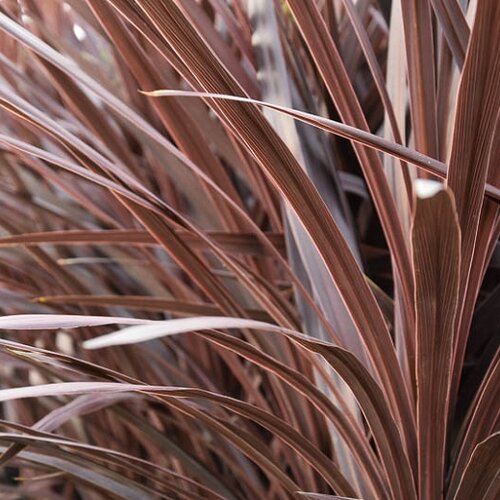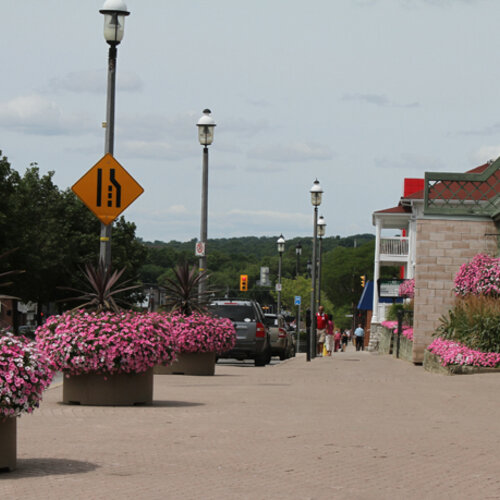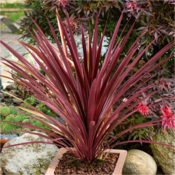'Red Star' False Dracaena Cordyline australis
- Part Sun to Sun
- Sun
- Spring
- Summer
-
36 - 72 Inches60 - 120 Inches18 - 36 Inches91cm - 1.8m1.5m - 3.0m46cm - 91cm
Features
Considered to be one of the best red Cordylines on the market, this strong, architectural, tropical plant is wonderful for adding height, texture and color to premium container recipes. Its leaves are a bit narrower and a brighter shade of bronze-red compared to ‘Red Sensation’ which has more purple undertones. An upright central stalks carries the sword-like leaves which are displayed in a fountain-like fashion. Over time, where it is hardy, it can develop into a small tree form. However, most people grow ‘Red Star’ as an exceptional annual.
Disease ResistantFoliage InterestDrought TolerantSalt TolerantResists:DeerCharacteristics
Plant Type:AnnualHeight Category:TallGarden Height:36 - 72 Inches 91cm - 1.8mSpacing:60 - 120 Inches 1.5m - 3.0mSpread:18 - 36 Inches 46cm - 91cmFlower Colors:WhiteFoliage Colors:RedFoliage Shade:Dark BurgandyHabit:UprightContainer Role:ThrillerPlant Needs
Light Requirement:Part Sun to SunLight Requirement:SunThe optimum amount of sun or shade each plant needs to thrive: Full Sun (6+ hours), Part Sun (4-6 hours), Full Shade (up to 4 hours).
Maintenance Category:EasyBloom Time:Grown for FoliageHardiness Zones:9a, 9b, 10a, 10b, 11a, 11bHeat Zones:10, 11Water Category:AverageUses:ContainerUses:Good for ScreeningUses:Specimen or Focal PointMaintenance Notes:Cordyline is a grass-like plant. Where temperatures get colder than 15 degrees F, the plants should be treated as annuals. Once the grass turns brown it can either be removed immediately or removed in the spring. It should not be expected to live through the winter and begin growing again in the spring.
In areas where winter temperatures remain above 15 degrees it should be considered a perennial and the following information should be useful. Evergreen or neutral grasses are usually plants that look like grasses but aren't actually classified as grasses, they are generally called grass-like plants.
Divide evergreen or neutral grasses and grass-like plants in spring only.
Evergreen grasses don't ever go dormant. Dividing plants wounds them to some degree. For evergreen grasses this wounding will really affect their ability to live through the winter.










